Content |
|---|
Description
23-28 cm.. height and a weight between 140 and 190 gr.
The plumage of the Dusky lory (Pseudeos fuscata) It is difficult to describe since there are many differences in tonality between one and the other specimens.. Some are of a very dark brown color, almost black and others have a much lighter shade. In addition the same happens with the two bands that cross you the chest Since the species goes through three phases: red, Orange and yellow, according to age, gender and the place of origin.
Characteristic of this species is the area of bare skin under the lower jaw until the birth of the throat. The lower wing coverts are orange and the lower flows dark blue. The obispillo is a silvery-white the bill is bright orange. The irises is orange and the legs dark.
There is no sexual dimorphism and the only way to differentiate male and female will be through DNA, Although some authors (Tomas Arndt) they are running that adult females lack the white feathers of the obispillo.
- Sound of the Dusky lory.
Habitat:
The Dusky lory they are quite widespread and locally common in primary forests , that is to say, those who have not undergone any transformation. But they are also found in wooded areas, up to an altitude of 2.400 m, During regeneration, especially those with large mature trees.
They are also distributed among residual tree beds during their flowering period., including those located in the parks and gardens in cities.
They are occasionally present in the lightly wooded Savannah or plantations of teak and coconut trees.
They normally reside in the landscape of hills or slopes steep slightly from low and middle mountain.
It´s gregarious and when flies or are fed in the cup of them trees full of flowers it makes in groups of 20 to 100 individuals or more.
Reproduction:
The nesting season It is very different depending on the region: It extends from November to April in the mountainous areas of East, While in Irian Jaya, the Indonesian part, they do in July.
The Dusky lory they prefer to nest in tall trees in the mountain area, the choice of a hole at high altitude on Earth probably do to protect itself against potential predators.
If the site is of your liking, reuse it for many years consecutively. Male and female participate in the work, the enlargement of the entrance or the cavity itself. Even if the nest has been used in the past, There are always minor changes to be carried out.
Although this species is quite common, We really know very little about its reproduction in the wild. In captivity, the female lays two eggs which are incubated for approximately 24 days. As in most New Guinea lories, the reproductive cycle is very long, about 70 days.
Food:
Consumes mainly nectar and perhaps the pollen it accumulates in plants of the genus schleffera or tree Rudraksha (Elaeocarpus sphaericus). Also consume flowers and fruits. It can be seen in large flocks in mango plantations and other cultivated trees. Feeds, occasionally, teak moth (Hyblaea puera).
Distribution:
The Dusky lory It has its area of distribution largely of New Guinea, except the mountains more high of the interior and the peaks more high of the mountains of Parotia.
They are present in Salawati on the Western Islands of papua and further to the East in the Yapen island on Cenderawasih Bay.
Conservation:
– Current IUCN Red List category: Least concern
– The population trend: Stable
The species are not threatened. Common and very sociable, It often forms bedrooms that can reach thousand of birds.
A wild population estimated above 100.000 individuals.
In some parts of the southeast of New Guinea, its density may be superior to 30 birds per square kilometer.
"Dusky lory" in captivity:
Are birds enough prolific and sociable you adapt easily to captivity.
Contrary to other parrots that eat mainly seeds and nuts; The loris require a greater percentage of fruits, outbreaks, nectar and pollen in your diet. In fact, in the nature, they can feed a maximum of 640 flowers in a day. They also feed on seeds.
It is usually aggressive with other species of lory. Easy to startle with strangers.
Alternative names:
– Dusky Lory, Dusk-orange Lory, Dusky-Orange Lory, White-rumped Lory (ingles).
– Lori sombre, Lori à dos blanc (French).
– Weißbürzellori (German).
– Lóris-dusky (Portuguese).
– Lori Sombrío, Lorito crepuscular (español).
scientific classification:
– Order: Psittaciformes
– Family: Psittaculidae
– Scientific name: Pseudeos fuscata
– Genus: Dusky
– Citation: (Blyth, 1858)
– Protonimo: those darkened
Images “Dusky lory”:
“Dusky lory” (Pseudeos fuscata)
Sources:
Avibase, mundoexotics, Oiseaux.NET
Photos: Wikimedia, birdsville.NET.au, Dick Daniels – Tampa’s Lowry Park Zoo, Dusky Lory – Woburn Safari Park (Wikimedia),
Sounds: BAS van Balen (Xeno-canto)
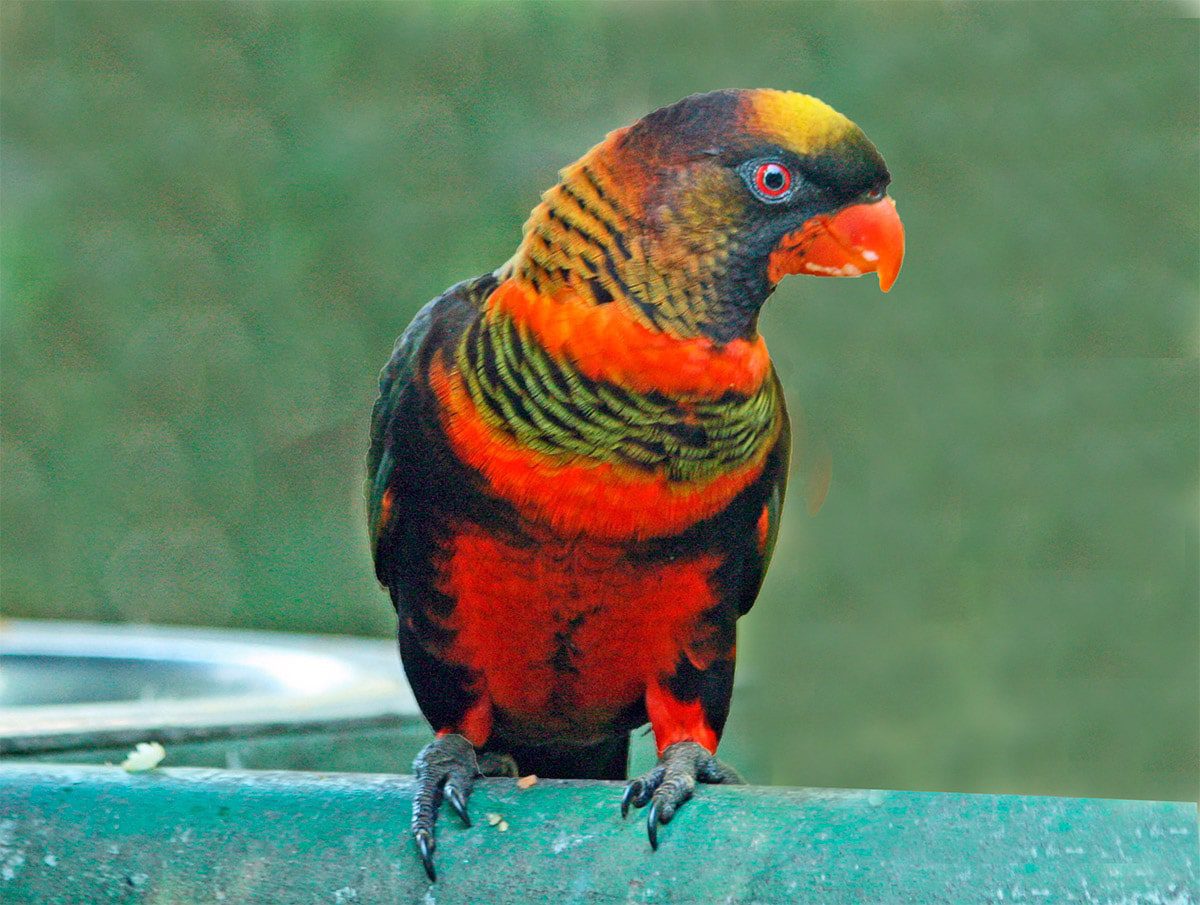

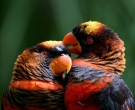
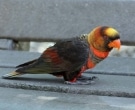
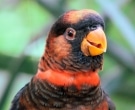
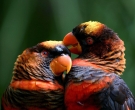

Lack Pseudeos cardinalis
Chalcopsitta cardinal, Cardinal paso a ser Pseudeos
According to the latest IOC World Bird Names updates it is correct Pseudeos cardinalis. All other authorities continue to accept Cardinal Lory.
We are following the IOC list – http://www.zoonomen.net/avtax/psit.html. We will soon change the scientific name to Pseudeos cardinalis.
Thank you very much for the note.